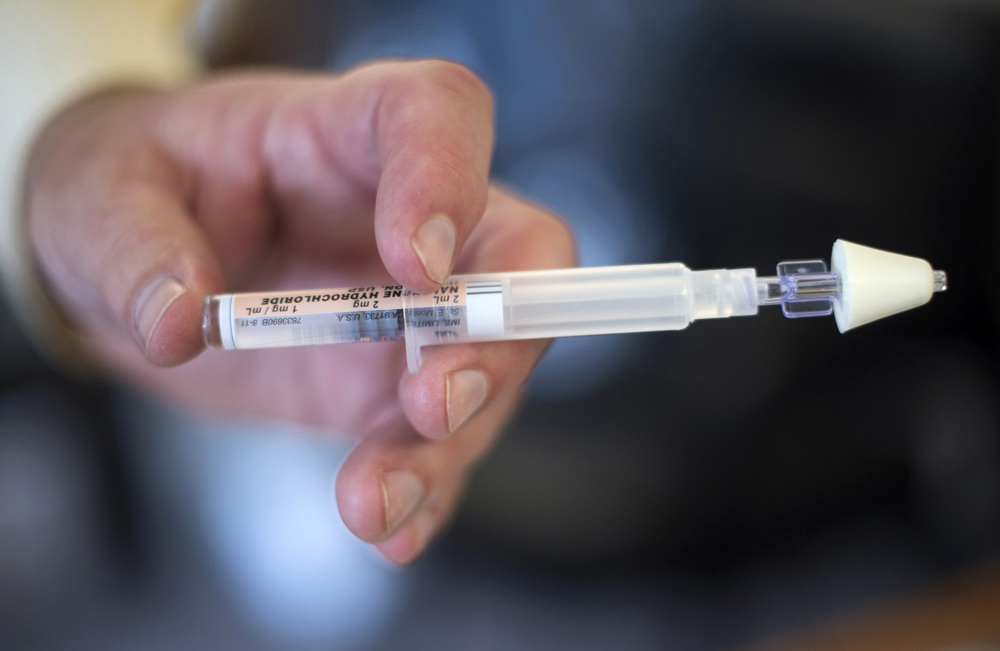Every doctor and nurse in our hospital's emergency room knew Jerome. He was one of our regulars.
In his 20s, he had back problems that led him to become addicted to prescription painkillers. That habit proved too expensive, and he switched to heroin.
Jerome used to come to the ER nearly every week. Often, he just wanted a sandwich and someone to talk to. He had lost his job and his home. Several months ago, he decided he had to quit heroin.
We helped him with health insurance so that he could find a primary care doctor. Our social worker connected him with addiction treatment, including medications and mental health counseling. He was also working on rekindling a relationship with his estranged family.
One day, paramedics brought Jerome to the ER. They had found him in an abandoned building. He'd relapsed and was shooting heroin. A friend saw him unconscious and called for help.
By the time paramedics arrived, he wasn't breathing and his heart had stopped beating. In the ER, we tried to resuscitate him for nearly an hour. We weren't successful.
In Baltimore, where I serve as health commissioner, more people die from drug and alcohol overdoses than from homicide. In 2013, there were 246 deaths related to drugs and alcohol, compared with 235 homicides.
Nationally, drugs account for more deaths than car crashes, shootings or alcohol, according to data from the Centers for Disease Control and Prevention. The CDC estimates that 120 Americans die from drug overdoses every day.
The majority of overdose deaths are from opioids, which include heroin and prescription painkillers such as fentanyl and oxycodone. People who overdose on opioids stop breathing, and within minutes can suffer brain damage and death.
What is most tragic about these deaths from opioid overdose is that there is an antidote that is safe, effective and literally lifesaving: naloxone (also called Narcan). It's easy for almost anyone to administer.
As an emergency physician, I have given naloxone dozens of times and have seen how someone can go from unconscious to walking and talking within seconds.
There are very few poisons in the world for which there is as complete an antidote as naloxone is for opioid overdoses. Naloxone has no side effects for someone who isn't on opioids. The drug only reverses toxic effects in someone who is overdosing. This is why naloxone is on the World Health Organization's list of essential medications.
So why are tens of thousands of Americans dying every year from a preventable illness?
First, there is the myth that having naloxone available will encourage opioid addiction. This argument makes no sense to me. People use opioids for the high. Naloxone takes that feeling away and sends the individual into immediate withdrawal.
Indeed, the notion that naloxone fosters addiction is as flawed as suggesting that having epinephrine available encourages people to eat foods they know they are allergic to. If a patient came to the ER with a severe allergy to peanut butter, I wouldn't hesitate to administer lifesaving epinephrine and to discharge him with an EpiPen. Yet, it isn't yet standard practice for doctors to dispense naloxone to patients with known heroin addiction or to those they are sending home with opioid prescriptions.
Second, skeptics claim that naloxone is difficult to use. This isn't the case. Naloxone can be given in the muscle (like an EpiPen) or in a nasal mist. Both methods can be taught to just about anyone in less than 10 minutes.

Detective Lt. Patrick Glynn holds a nasal injection containing the overdose-reversing drug naloxone at police headquarters in Quincy, Mass.
In Baltimore, we have been training people with heroin addiction to use naloxone since 2004, including targeted training in hot spots, such as shooting alleys, recovery housing and prisons.
Pilot projects in New York City and rural North Carolina, among others, have found that police, family and friends can be similarly trained. Just like defibrillators, which are available in public places for use by bystanders, naloxone allows first responders and laypeople alike to save a life.
Naloxone alone isn't the answer to the country's opioid epidemic. We need more access to addiction treatment, including medication-assisted treatment with methadone and buprenorphine. We also have to address the underlying problem to prevent addiction in the first place, including stopping the epidemic of prescription drug abuse. But these aren't reasons we shouldn't make a lifesaving medication available to all.
If Jerome's friend had access to naloxone, I believe my former patient would still be alive today. Perhaps he would be back at work and reunited with his family. We never got the chance to find out.
Dr. Leana Wen is an emergency physician and the Health Commissioner of Baltimore City. She is the author of "When Doctors Don't Listen: How to Avoid Misdiagnoses and Unnecessary Care," and founder of Who's My Doctor, a project to encourage transparency in medicine.
9(MDE1MTIxMDg0MDE0MDQ3NTY3MzkzMzY1NA001))
300x250 Ad
300x250 Ad
